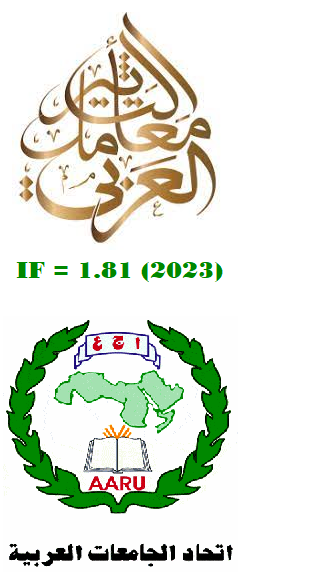Managing Logistics Activities for Improving Business Performance
Abstract
This paper examines the relationships between three logistics activities: customer service, warehouse management, and distribution activity on business performance. The research adopts a quantitative research approach. A survey was utilized to assess managing logistics activities and business performance and evaluate the created research hypotheses. The author tests the hypotheses with a sample in Nawras Company in Erbil with SmartPLS version 4.0 to evaluate and process the data. The results show that the three logistics activities positively related to business performance. The research guides logistics managers in understanding how logistics activities enhance business performance. This research is one of the scholarly works to uncover the logistics activities performed by the company rather than outsourcing logistics activities for enhancing business performance in the Kurdistan region of Iraq.
Downloads
References
capabilities: A qualitative study. International Journal of Retail and Distribution Management, 46(6), 577-594.
Adiguzel, S. (2019). Logistics management in disaster. Journal of Management Marketing and Logistics, 6(4), 212-224.
Aharonovitz, M.C.S., Vieira, J.G.V., & Suyama, S.S. (2018). How logistics performance is affected by supply chain relationships. The International Journal of Logistics Management, 29(1), 284-307.
Aktas, E., & Ulengin, F. (2005). Outsourcing logistics activities in Turkey. Journal of Enterprise Information Management, 18(3), 316-329.
Andiyappillai, N. (2020). Digital transformation in warehouse management systems (WMS) implementations. International Journal of Computer Applications, 177(45), 34-37.
Aithal, R.K., & Maurya, H. (2017). Exploring channel conflict in an emerging economy: The small retailer’s perspective. International Journal of Retail and Distribution Management, 45(10), 1061-1078.
Appelqvist, P., Babongo, F., Chavez-Demoulin, V., Hameri, A.P., & Niemi, T. (2016). Weather and supply chain performance in sport goods distribution. International Journal of Retail and Distribution Management, 44(2),178-202.
Barney, J. (1991). Firm resources and sustained competitive advantage. Journal of Management, 17(1), 99-120.
Bhattacharjya, J., Ellison, A., & Tripathi, S. (2016). An exploration of logistics-related customer service provision on Twitter: The case of e-retailers. International Journal of Physical Distribution and Logistics Management, 46(6/7), 659-680.
Blass, V., & Corbett, C.J. (2018). Same supply chain, different models: Integrating perspectives from life cycle assessment and supply chain management. Journal of Industrial Ecology, 22(1), 18-30.
Buldeo Rai, H., Verlinde, S., Macharis, C., Schoutteet, P., & Vanhaverbeke, L. (2019). Logistics outsourcing in omnichannel retail. International Journal of Physical Distribution and Logistics Management, 49(3), 267-286.
Chebet, E., & Kitheka, S. (2019). Effects of inventory management system on firm performance-an empirical study. International Journal of Innovative Science Research Technology, 4(9), 34-242.
Chin, W.W. (1998). The partial least squares approach for structural equation modeling. In: Modern Methods for Business Research. Lawrence Erlbaum Associates Publishers: Hillsdale, New Jersey. 295-336.
Daugherty, P.J., Bolumole, Y., & Grawe, S.J. (2019). The new age of customer impatience: An agenda for reawakening logistics customer service research. International Journal of Physical Distribution and Logistics Management, 49(1), 4-32.
De Angelis, R., Howard, M., & Miemczyk, J. (2018). Supply chain management and the circular economy: Towards the circular supply chain. Production Planning and Control, 29(6), 425-437.
De Koster, M.B.M. (2012). Warehousing in the Global Supply Chain: Advanced Models, Tools and Applications for Storage Systems. London: Springer.
Dotoli, M., Epicoco, N., Falagario, M., & Sciancalepore, F. (2015). A crossefficiency fuzzy data envelopment analysis technique for performance evaluation of decision making units under uncertainty. Computers and Industrial Engineering, 79, 103-114.
Eng, T.Y. (2016). An empirical study of Chinese SME grocery retailers’ distribution capabilities. Supply Chain Management, 21(1), 63-77.
Es, H.A., Hamzacebi, C., & Firat, S.U.O. (2018). Assessing the logistics activities aspect of economic and social development. International Journal of Logistics Systems and Management, 29(1), 1-16.
Ghoumrassi, A., & Țigu, G. (2017). The impact of the logistics management in customer satisfaction. In: Paper Presented at the Proceedings of the International Conference on Business Excellence.
Ghozali, I. (2014). SEM Metode Alternatif Dengan Menggunakan Partial Least Squares (PLS). Semarang: Badan Penerbit Universitas Diponegoro.
Hair, J.F., Black, W.C., Babin, B.J., & Anderson, R.E. (2010). Multivariate Data Analysis. 7th ed. New Jersey: Pearson Prentice Hall.
Hu, Z.H., & Sheng, Z.H. (2014). A decision support system for public logistics information service management and optimization. Decision Support Systems, 59, 219-229.
Hübner, A., Wollenburg, J., & Holzapfel, A. (2016). Retail logistics in the transition from multi-channel to omni-channel. International Journal of Physical Distribution and Logistics Management, 46(6/7), 562-583.
Kamali, A. (2019). Smart warehouse vs. traditional warehouse-review. CiiT International Journal of Automation Autonomous System, 11(1), 9-16.
Kisperska-Moron, D. (2005). Logistics customer service levels in Poland: Changes between 1993 and 2001. International Journal of Production Economics, 93-94, 121-128.
Lagorio, A., Zenezini, G., Mangano, G., & Pinto, R. (2022). A systematic literature review of innovative technologies adopted in logistics management. International Journal of Logistics Research Applications, 25(7), 1043-1066.
Lee, C.K.M., Lv, Y., Ng, K.K.H., Ho, W., & Choy, K.L. (2018). Design and application of internet of things-based warehouse management system for smart logistics. International Journal of Production Research, 56(8), 2753-2768.
Leuschner, R., Charvet, F., & Rogers, D.S. (2013). A meta-analysis of logistics customer service. Journal of Supply Chain Management, 49(1), 47-63.
Liao, H., & Chuang, A. (2004). A multilevel investigation of factors influencing employee service performance and customer outcomes. Academy of Management Journal, 47(1), 41-58.
Liu, H., Purvis, L., Mason, R., & Wells, P. (2020). Developing logistics value propositions: Drawing insights from a distributed manufacturing solution. Industrial Marketing Management, 89, 517-527.
Mao, J., Xing, H., & Zhang, X. (2018). Design of intelligent warehouse management system. Wireless Personal Communications, 102(2), 1355-1367.
Mariia, H., Natalia, T., Popkowski, T., & Kateryna, M. (2020). Digital transformations of logistics customer service business models. Intellectualization of Logistics and Supply Chain Management, 1, 57-75.
Marmul, L., & Krukovskaya, E. (2018). Certification of agrarian enterprises-producers of organic products in order to enter European markets. Baltic Journal of Economic Studies, 4(4), 209-216.
Martins, R., Pereira, M.T., Ferreira, L.P., Sá, J.C., & Silva, F.J.G. (2020). Warehouse operations logistics improvement in a cork stopper factory. Procedia Manufacturing, 51, 1723-1729.
Massoudi, A.H. (2018). Achieving competitive advantage by using supply chain strategies. International Journal of Supply Chain Management, 7(4), 22-29.
Massoudi, A.H. (2019). Adopting lean supply chain at unipharma Syria to improve its response to clients. International Journal of Supply Chain Management, 8(5), 10-19.
Masudin, I., Fernanda, F.W., & Widayat, W. (2018). Halal logistics performance and customer loyalty: From the literature review to a conceptual framework. International Journal of Technology, 9(5), 1072-1084.
Minashkina, D., & Happonen, A. (2020). Systematic literature review and research gap issues on third party logistics operators selecting WMS for efficient operations for customers. International Journal of Supply Chain and Inventory Management, 3(2), 142-166.
Moons, K., Waeyenbergh, G., & Pintelon, L. (2019). Measuring the logistics performance of internal hospital supply chains-a literature study. Omega, 82, 205-217.
Odiwuor, A., & Juma, D. (2020). Influence of logistics management on customer satisfaction among public sector medical suppliers in Kisumu county, Kenya. International Journal of Recent Research in Social Sciences Humanities, 7(3), 59-74.
Pellathy, D.A., In, J., Mollenkopf, D.A., & Stank, T.P. (2018). Middle-range theorizing on logistics customer service. International Journal of Physical Distribution and Logistics Management, 48(1), 2-18.
Pires, A.P.F., Rezende, C.L., Assad, E.D., Loyola, R., & Scarano, F.R. (2017). Forest restoration can increase the Rio Doce watershed resilience. Perspectives in Ecology and Conservation, 15(3), 187-193.
Rexhausen, D., Pibernik, R., & Kaiser, G. (2012). Customer-facing supply chain practices-the impact of demand and distribution management on supply chain success. Journal of Operations Management, 30(4), 269-281.
Ristovska, N., Kozuharov, S., & Petkovski, V. (2017). The impact of logistics management practices on company’s performance. International Journal of Academic Research in Accounting Finance and Management Sciences, 7(1), 245-252.
Robb, G.N., McDonald, R.A., Chamberlain, D.E., & Bearhop, S. (2008). Food for thought: Supplementary feeding as a driver of ecological change in avian populations. Frontiers in Ecology and the Environment, 6(9), 476-484.
Salhieh, L., Abushaikha, I., Atmeh, M., & Mdanat, M. (2018). Transportation extended wastes and road haulage efficiency. International Journal of Quality and Reliability Management, 35(9), 1792-1808.
Sarder, M.D. (2020). Logistics customer services. In: Logistics Transportation Systems. Amsterdam, Netherlands: Elsevier. p197-217.
Shah, B., & Khanzode, V. (2017). A comprehensive review of warehouse operational issues. International Journal of Logistics Systems and Management, 26(3), 346-378.
Shareef, R.A., & Atan, T. (2019). The influence of ethical leadership on academic employees’ organizational citizenship behavior and turnover intention: Mediating role of intrinsic motivation. Management Decision, 57(3), 583-605.
Sharma, S., & Shah, B. (2015). A proposed hybrid storage assignment framework: A case study. International Journal of Productivity and Performance Management, 64(6), 870-892.
Singh, D., & Verma, A. (2018). Inventory management in supply chain. Materials Today Proceedings, 5(2), 3867-3872.
Speranza, M.G. (2018). Trends in transportation and logistics. European Journal of Operational Research, 264(3), 830-836.
Stefansson, G. (2006). Collaborative logistics management and the role of third-party service providers. International Journal of Physical Distribution and Logistics Management, 36(2), 76-92.
Sum, C.C., Teo, C.B., & Ng, K.K. (2001). Strategic logistics management in Singapore. International Journal of Operations and Production Management, 21(9), 1239-1260.
Świtała, M., & Klosa, E. (2015). The determinants of logistics cooperation in the supply chain-selected results of the opinion poll within logistics service providers and their customers. LogForum, 11(4), 329-340.
Towers, N., & Xu, K. (2016). The influence of guanxi on physical distribution service quality availability in e-commerce sourcing fashion garments from China. Journal of Retailing and Consumer Services, 28, 126-136.
Villarreal, B., Garza-Reyes, J.A., & Kumar, V. (2016). Lean road transportation-a systematic method for the improvement of road transport operations. Production Planning and Control, 27(11), 865-877.
Wall, T.D., Michie, J., Patterson, M., Wood, S.J., Sheehan, M., Clegg, C.W., & West, M. (2004). On the validity of subjective measures of company performance. Personnel Psychology, 57(1), 95-118.
Wernerfelt, B. (1984). A resource-based view of the firm. Strategic Management Journal, 5(2), 171-180.
Wudhikarn, R., Chakpitak, N., & Neubert, G. (2018). A literature review on performance measures of logistics management: An intellectual capital perspective. International Journal of Production Research, 56(13), 4490-4520.
Yang, C.C. (2016). Leveraging logistics learning capability to enable logistics service capabilities and performance for international distribution center operators in Taiwan. The International Journal of Logistics Management, 27(2), 284-308.
Zhou, H., Wang, Q., & Zhao, X. (2020). Corporate social responsibility and innovation: A comparative study. Industrial Management and Data Systems, 120(5), 863-882.
Zhu, W., Ng, S.C.H., Wang, Z., & Zhao, X. (2017). The role of outsourcing management process in improving the effectiveness of logistics outsourcing. International Journal of Production Economics, 188(C), 29-40.
Copyright (c) 2023 Raad A. Shareef

This work is licensed under a Creative Commons Attribution-NonCommercial-NoDerivatives 4.0 International License.
Authors who publish with this journal agree to the following terms:
1. Authors retain copyright and grant the journal right of first publication with the work simultaneously licensed under a Creative Commons Attribution License [CC BY-NC-ND 4.0] that allows others to share the work with an acknowledgment of the work's authorship and initial publication in this journal.
2. Authors are able to enter into separate, additional contractual arrangements for the non-exclusive distribution of the journal's published version of the work (e.g., post it to an institutional repository or publish it in a book), with an acknowledgment of its initial publication in this journal.
3. Authors are permitted and encouraged to post their work online (e.g., in institutional repositories or on their website) prior to and during the submission process, as it can lead to productive exchanges, as well as earlier and greater citation of published work (See The Effect of Open Access).









